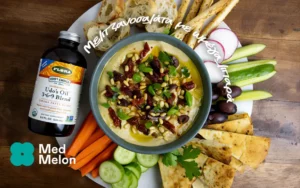Scientific Names of Birch Leaf and Bark: Betula pendula Roth, B. pubescens EHRH., B. alba L. [Fam. Betulaceae]
Forms:
Birch leaf tea; Birch leaf tincture; birch bark extract standardized for betulin and betulinic acid
Traditional Usage:
– Antibacterial (Bark)
– Antiviral (Bark)
– Anti-inflammatory (Leaf and Bark)
– Backache (Bark)
– Blood Purification (Leaf and Bark)
– Bone and Joint Conditions (Leaf)
– Cellular Regeneration (Bark)
– Cleansing (Bark)
– Cramps (Leaf)
– Detoxification (Bark)
– Diuretic (Leaf)
– Inflammation (Lower Urinary Tract) (Leaf)
– Irrigation Therapy (of urinary tract) (Leaf)
– Hair Loss (Leaf)
– Pain Relief (Bark)
– Rashes (Leaf and Bark)
– Skin Rashes (Leaf and Bark)
– Urinary Tract Infections (UTIs) (Leaf)
– Urinary Tract Gravel (Leaf)
– Warts (Bark)
– Wounds (Leaf and Bark)
Overview:
The leaves of birch trees, Betula pendula Roth and B. pubescens EHRH. [Fam. Betulaceae] can be used to make a pleasant tasting tea that is listed in the German Pharmacopoeia as a diuretic used in ‘irrigation therapy’ for the treatment of bacterial and inflammatory conditions of the lower urinary tract. Animal experiments have confirmed the strong diuretic effect of the tea and this effect is ascribed to several of the flavonoids found abundantly in the leaves. The German Commission E monograph also recommends the tea for preventing urinary tract gravel and for treating bone and joint complaints. Traditionally, the leaf tea was also used as a blood purifier, to prevent hair loss and externally as a wash for skin rashes and complaints and as a hair conditioner. Young birch leaves and buds are also effective for treating infected cuts and sores. In one clinical trial, the treatment of purulent wounds with 20% tincture of birch buds in 70% alcohol was performed on 108 patients (83 patients had superficial wounds, 10–deep wounds, 15–cavitary wounds). Good results were obtained after using the birch buds tincture in all the patients, including patients with antibiotic-resistant infections. Birch bark tea also has strong medicinal properties and was traditionally used by American Indians for pain relief (it contains natural aspirin). Recently it was discovered that the bark of B. alba L. causes apoptosis in abnormal skin cells. The active ingredient is betulinic acid, a pentacyclic triterpene. In studies conducted with mice carrying human abnormal skin growths, these growths were completely inhibited without toxicity. Betulinic acid is currently undergoing preclinical development for the treatment or prevention of malignant skin growths. Betulin, betulinic acid and ursolic acid also have strong anti-inflammatory activity similar to gluco-corticoids and are antiviral and can be used against warts externally.
Active Ingredients:
The leaves of birch contain: At least 3% flavonoids including hyperoside, quercitrin, myricetin galactoside, kaempferol, myricetin and quercetin glycosides; in the buds, lipophilic flavone methyl esters; up to 1% essential oil and possibly saponins. The bark of white birch contains several terpenoids and triterpenes including betulin, betulinic acid, a pentacyclic triterpene, and ursolic acid. The bark also contains salicylate and methyl salicylate (natural aspirin).
Suggested Amount:
Unless otherwise prescribed, 5-10 grams (approximately five to ten level teaspoons) of cut or powdered birch leaves are taken daily. Boiling water (ca. 150ml) is poured over the birch leaves and after fifteen minutes strained. Birch leaf tea is taken 3-4 times per day. (One Teaspoon = ca. 1 gram; 1Tablespoon = ca. 2 grams).
Drug Interactions:
None known
Contraindications:
Birch leaf tea or tincture and/or other diuretics are contraindicated in cases of edema caused by impaired heart or kidney function.
Side Effects:
Care must be taken to drink generous amounts of fluid with any diuretic in order to avoid dehydration.
References:
Manez S, Recio MC, Giner RM, Rios JL. 1997. Effect of selected triterpenoids on chronic dermal inflammation. Eur J Pharmacol 1997 Sep 3; 334(1): 103-5
Pisha E, Chai H, Lee IS, Chagwedera TE, Farnsworth NR, Cordell GA, Beecher CW, Fong HH, Kinghorn AD, Brown DM, et al. 1995. Discovery of betulinic acid as a selective inhibitor of human melanoma that functions by induction of apoptosis. Nat Med. 1995 Oct; 1(10): 1046-51.
Recio MC, Giner RM, Manez S, Gueho J, Julien HR, Hostettmann K, Rios JL. 1995. Investigations on the steroidal anti-inflammatory activity of triterpenoids from Diospyros leucomelas. Planta Med 1995 Feb; 61(1): 9-12.
Wichtl M (ed). 1994. Betulae folium – Birch leaf. In Herbal Drugs and Phyto-pharmaceuticals. (English translation by Norman Grainger Bisset). CRC Press, Stuttgart, pp. 106-108.
Zakharov NA, Pridantseva NM, Khokhlova AA, Nikolaeva VG. 1980. [Use of a tincture of birch buds for treating suppurative wounds]. Vestn Khir Im I I Grek 1980 Jan; 124(1): 82-85 [Article in Russian].




